The Sonos Move is an exceptional speaker that aims its sights high in an attempt to conquer both in and outside the home. AppleInsider jams out to see if lives up to the Sonos name.
AppleInsider got some early hands-on time with the Sonos Move at its launch event in New York, but in the time since we've had substantially more time to try out Sonos' latest offering.
Here's how the Sonos Move stacks up.
Intro and setup
In the box, Sonos includes the Move itself, the docking station, and a travel bag to keep things clean.
When we first put our eyes on the Move we were surprised at its rather large stature and heft. While it is portable aided by a comfortable grip, the Move isn't something one will toss in a bag or clip on the side of a backpack.
The design of the Move is simple. The body is largely enveloped by the metal speaker grille that wraps around. A rubberized foot surrounds the bottom and the top is occupied by an array of four microphones and the basic controls.
If you've seen other Sonos speakers the controls will be instantly familiar with Sonos borrowing the same design. There is a play/pause button in the center with additional buttons accompanying it on each side. They are touch-sensitive and the left/right control volume while the center controls playback.
If you flip the speaker around there is a power button, the infinity symbol-laden pairing button, and a mode button to alternate between Wi-Fi and Bluetooth. Essentially all you'll need.
For power, there are two metal contacts at the bottom that will align with the docking station. An additional USB-C port can also be used for power if necessary. It is quite subtle and we even missed it at first glance.
After disposing of the requisite unboxing, setup of the Move is — again — very similar to any other Sonos speaker. The Sonos app is launched, a new device is added, and Sonos walks users through the process of connecting to the Wi-Fi network, registering the device, and performing any updates.
Sonos once more uses Bluetooth to facilitate the setup process through Wi-Fi mode will be the default once setup is complete.
In the home
One misconception regarding the Move that we've already heard repeatedly, is that this is solely a portable speaker — one to be used on the go, but not particularly in the home. That couldn't be further from the truth, though.
Sonos Move is every bit an in-home Sonos speaker. It does everything every other Sonos speaker can do.
It can be configured in a stereo pair with a second Move. Grouped with other Sonos speakers for multi-room playback. And, of course, stream content from endless sources direct over Wi-Fi.
Once the basic setup process is completed through the Sonos app, users can jump into the Home app and add the Move as a HomeKit AirPlay 2 device.
With the upcoming iOS 13.1 update you will be able to tie AirPlay 2 speakers into scenes and automated based on the time of day, when you come and go, and more. AirPlay 2 also brings multi-room capabilities with any other AirPlay 2 devices, other than Sonos.
AirPlay 2 is our go-to option for playing music, because of how easy it is. We don't have to jump into the Sonos app, we just use Siri on our phone to "play some happy music on the Sonos Move" and it happens. If placed in a room, a similar command can apply to the whole room.
To help sell the image of an in-home speaker, Sonos developed an oval dock for the Move. In doing research, Sonos found that if a speaker had to be plugged in, more often than not users would simply set the speaker down and not plug it in unless the battery was truly dead. It was simply too much of a burden. Hence, the dock.
By going with an oval, Sonos says the idea is that it makes it easiest to correctly align the contacts on the back with those in the dock. The speaker almost aligns itself as it is placed down.
In practice, this works. Mostly.
Whenever we placed the Move into the dock, it would align perfectly 100-percent of the time. The drawback is that the dock wasn't sure-footed enough to stay put. We'd place the speaker and the dock would rotate ever so slightly to match the angle of the speaker.
This isn't a huge deal, but we ended up having to rotate the speaker and dock setup almost every time we placed the Move down to charge. Had the base been, say round, this would be a lesser issue as we'd purposefully try to place the speaker and we wouldn't have to move the dock.
We will give Sonos kudos for the lengthy cable that is included with the dock, allowing us much more free placement in the home.
Sonos also brings two virtual assistants to the Move. Users can choose between Amazon Alexa or Google Assistant, with Siri still being exclusive to HomePod and Apple products. These assistants use the four-microphone far-field array on the top to hear you even across the room.
We tested this out with Amazon Alexa enabled and it worked great. This makes the Sonos Move an expensive, large, and better sounding Amazon Echo. For those who don't want/need the assistant, they don't need to be enabled and the microphone can be turned off.
With its designated perch, AirPlay 2, choice of virtual assistant, and excellent sound, the Sonos Move is a great home speaker — just like other Sonos speakers. But that is where it starts to get interesting.
On the go
The Sonos Move can be lifted from its perch and moved about - hence "move" in the name. It can go with you room-to-room, outside to the patio, or in the backyard.
Sonos paid a lot of attention to the antenna placement and we were very impressed with its Wi-Fi performance. We took it all around the outside of our home and continued to get signal until we were far too far removed. This makes it solid for Wi-Fi-based playback, like AirPlay 2, for even outside our home.
When off the dock and not in use, Move will automatically go into a low-power standby mode. It can last for a couple of days in this mode and is instantly available when summoned.
This includes AirPlay 2. We let our Move drift off into standby mode and tried sending audio to it over AirPlay 2 and it only took a few moments for the speaker to awake and start playing. This was seriously impressive and greatly improves the usability of the speaker in the real world.
Once you stray away from your home — be it camping, to the beach, on vacation, etc — the Move can be flipped to Bluetooth mode with the press of a button.
With Bluetooth, especially with iPhones as they lack AptX support, you do notice a small dip in audio quality, which is good Wi-Fi support is so robust.
The speaker still sounds great on its own so it will still sound better than most Bluetooth speakers out there.
Playback aside, the modern-designed Move is tailor-made for the outdoors. Sonos scrutinized every detail with the outdoors in mind as much as the indoors.
The rubberized feet on the Sonos Move add additional drop protection. It is weather-resistant enough to be left outside in the rain overnight and still be functioning the next morning, though it shouldn't be submerged.
Even the controls can be used while your hands are wet, whether you just got out of the pool or you just set down your condensation-adorned drink.
We've been using the Move in, around, and outside our home for quite a few days. As we ventured out for the weekend to the lake, we trucked the Move along. It was a bit heavier than the speaker we'd normally take — the Libratone Zipp 2.
It lasted us all through the first night and halfway through the following day before we needed to power up again using USB-C. That USB-C port is welcomed and we could easily top it off with our iPad Pro's charger.
One feature we'd have liked to see is a power output for charging our iPhone. The internal battery is quite powerful and we wish we could siphon a bit out to our phone.
When we asked Sonos about the absence of this feature, they say they focused on prolonging the battery life of the Move itself. Problem with that is the speaker is useless if your phone's dead. And yes, that happened to us too at which point the Move became nothing more than a massive paperweight for our euchre scorecards.
Audio prowess
Sonos diehards have been clamoring for a portable Sonos speaker for years, but Sonos put it off until it could do it right. The biggest part of that is making sure it had the audio chops to back it up.
In our opinion, Sonos followed through. We were very impressed with the sound coming from the Move. Quite the accomplishment for an indoor-outdoor speaker.
Sound dissipates quickly outdoors so Sonos needed quite a bit of power behind the Move. The Move is so powerful we found it almost too powerful when indoors. In our small home, cranking the Move up to the max was overwhelming, but a good volume when hanging out by the pool.
We relied, as per usual, quite a bit on our AppleInsider audio testing playlist to test the fidelity of the Move.
Even outdoors, the bass was substantial. It wasn't as overwhelming as HomePod but as we jammed out to Joe Cocker's Come Together we were happy as those guitar riffs kicked in.
The speaker was also well balanced, not feeling bass-heavy or overly shrill. Even at high volume was it able to maintain this.
It's powered by two Class-D digital amplifiers, a single tweeter, and a single mid-woofer which matches that of the Sonos One. While they are the same configuration, everything is customized specifically for the Sonos Move.
When we compared it to our Sonos One, they had very similar profiles though the Move was clearly louder.
Truly, the audio sounded great, especially for a portable speaker.
One feature that is important to audio quality, and one some may consider overkill, is Trueplay. Sonos is debuting Auto Trueplay with the Sonos Move and is exactly as it sounds.
Automatic Trueplay tuning whenever the speaker is moved. It uses an internal gyroscope to detect movement and once it is in its new home, the four microphones on the top automatically listen to the playback to adjust for its surroundings.
This is very similar to the HomePod's tuning process and much preferred to the manual Trueplay tuning that involves waving your phone around in the air. Sonos realized that people wouldn't do that with a portable speaker and crowdsourced piles of data from the manual tuning sessions to build Auto Trueplay.
We heard a demo of this from Sonos at the launch event but in the real world, Auto Trueplay is much more subtle. It only kicks in to make drastic changes when the speaker is placed into fringe situations, such as a wooden cubby during the Sonos demo. We moved the speaker frequently and rarely could hear a huge difference when Auto Trueplay kicked in.
Move over competition
Before composing and shooting this review, we asked around the office "what are your impressions of the Move?"
Everyone agreed it was a remarkably capable speaker, but at least one AppleInsider staffer was of the sentiment that the Sonos Move answers a question that no one was asking.
After a lot of pondering and even more time with the Move, indeed, he isn't asking the question because that doesn't suit his use cases. But, just because a speaker has good sound quality, that doesn't mean that there isn't a use-case for it being portable with a battery as well.
The Sonos Move's biggest hangup is that price tag. But looking past that, you have a great sounding speaker that works outside the home as well as it works in the home. It is widely open to different integrations and platforms, it has automation potential with HomeKit, and has multi-room support with other AirPlay 2 speakers.
I don't consider myself someone who needs the best sound. I consider myself someone who wants really good sound. I'd easily fork over around $150 for a solid Bluetooth speaker and $200-300 for a great indoor speaker.
The Sonos Move fills both of those needs with a single product. I don't need the clutter of two speakers and, by keeping the Move on the dock, my portable speaker is always charged and ready to go.
In that way, I can justify the $399 Sonos Move. Those who aren't asking the question put forth above don't need both an indoor or an outdoor speaker and many may already have one or the other in their possession. That makes picking up the Move even more difficult.
However, if you're like me and want that ideal speaker that plays nice with your Apple gear, the Sonos Move is near as good as it gets.
Rating: 4.5 out of 5
Where to buy
Sonos Move will be available starting September 24 for $399.
 Andrew O'Hara
Andrew O'Hara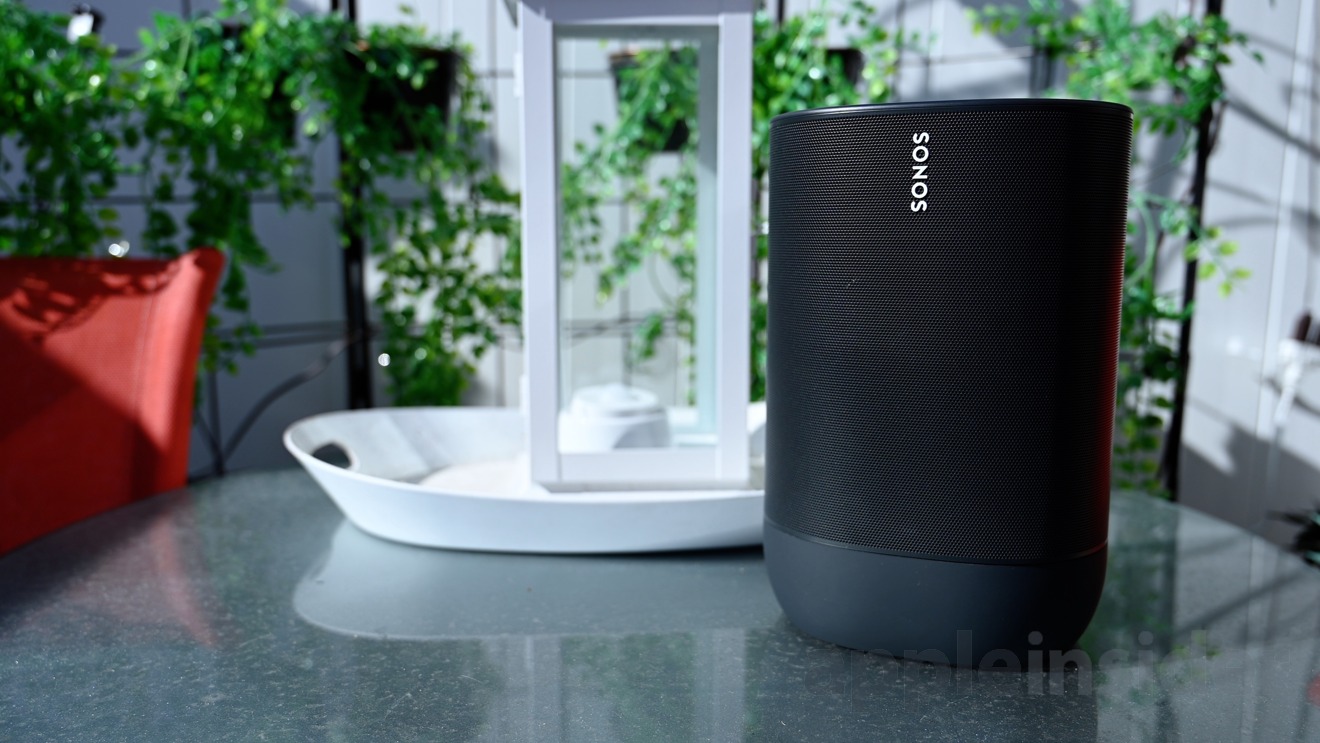

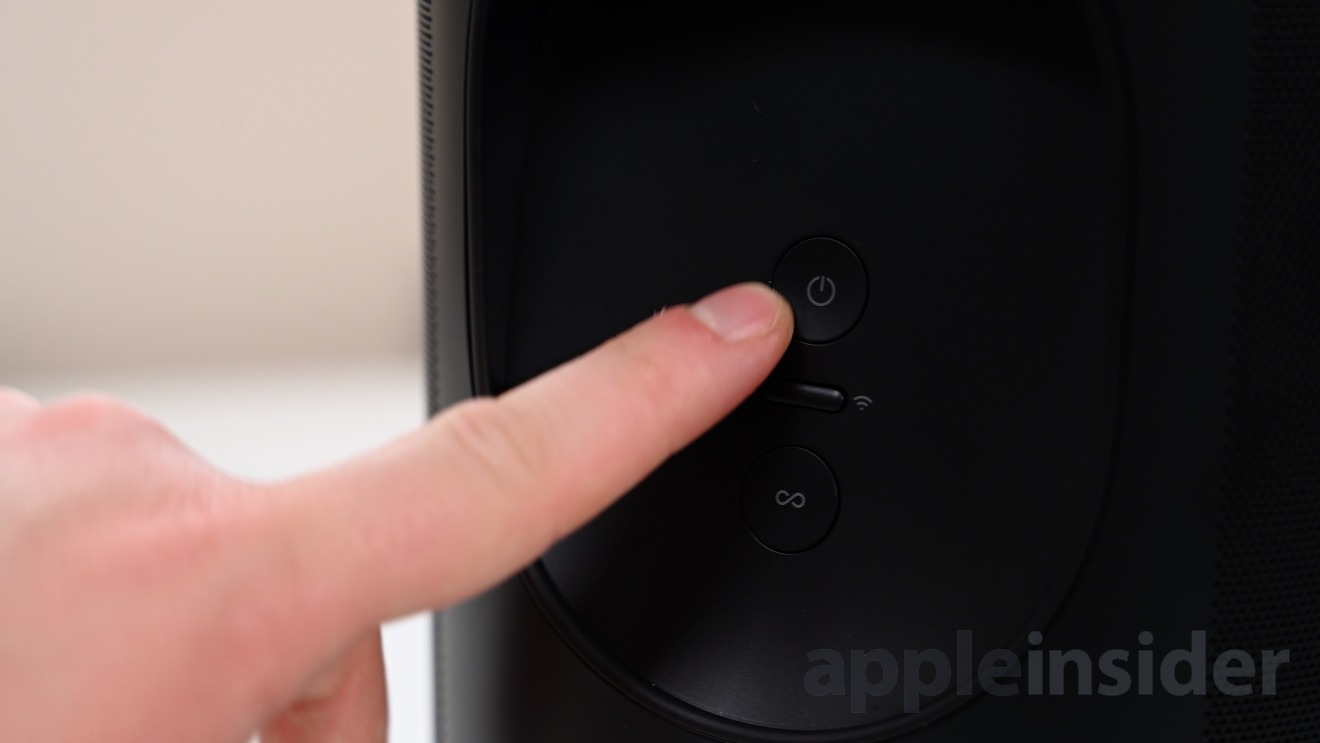
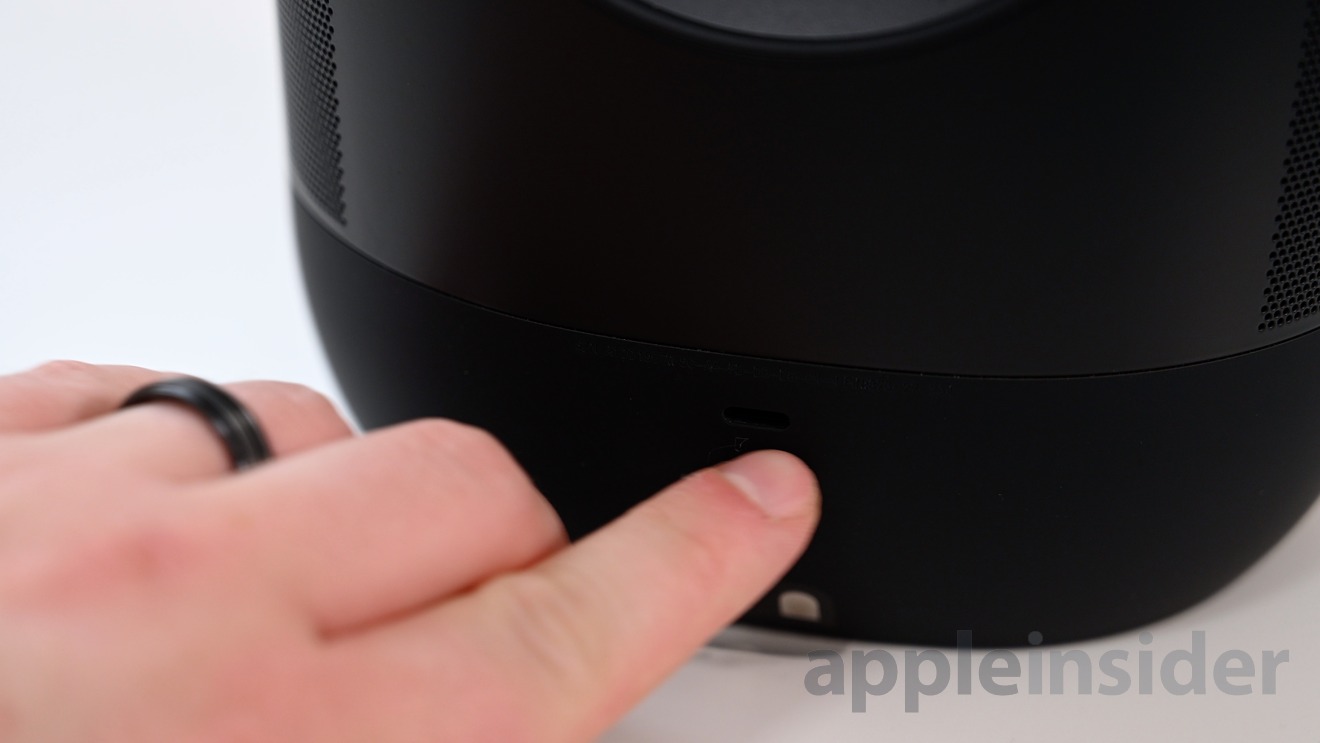
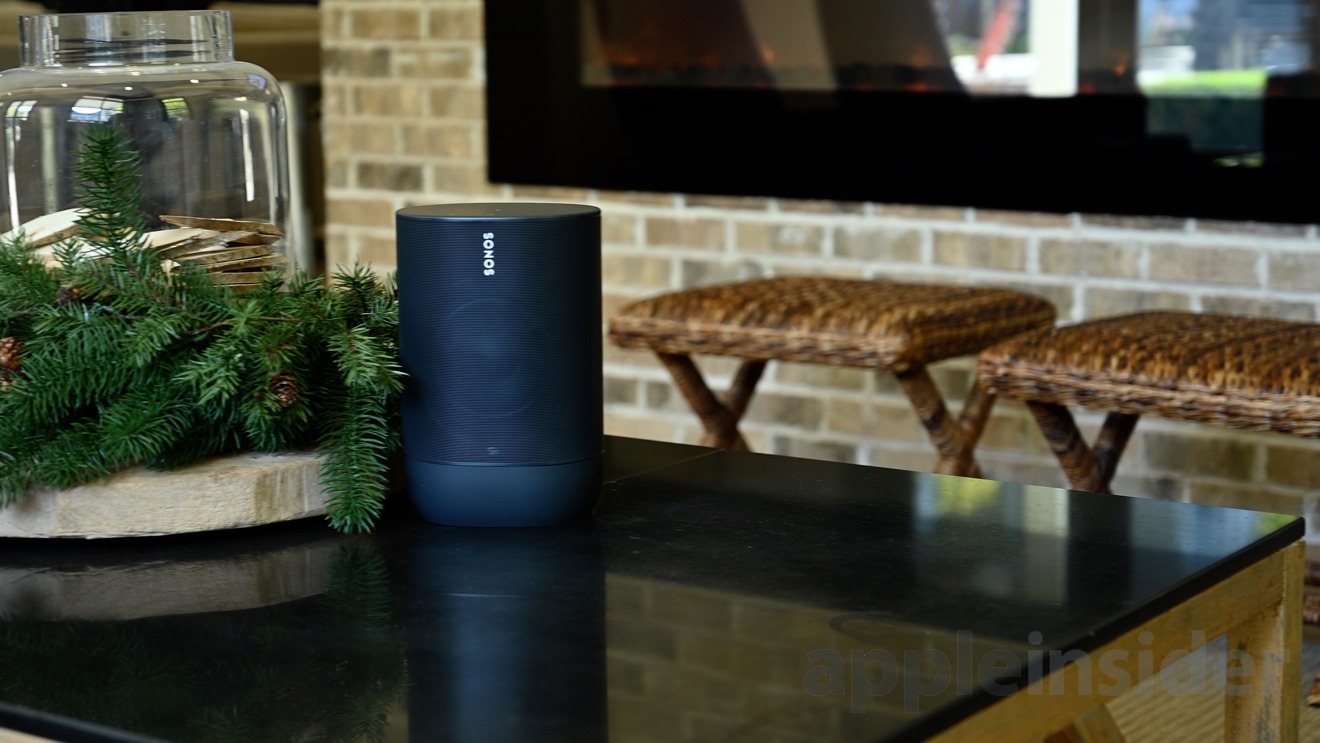
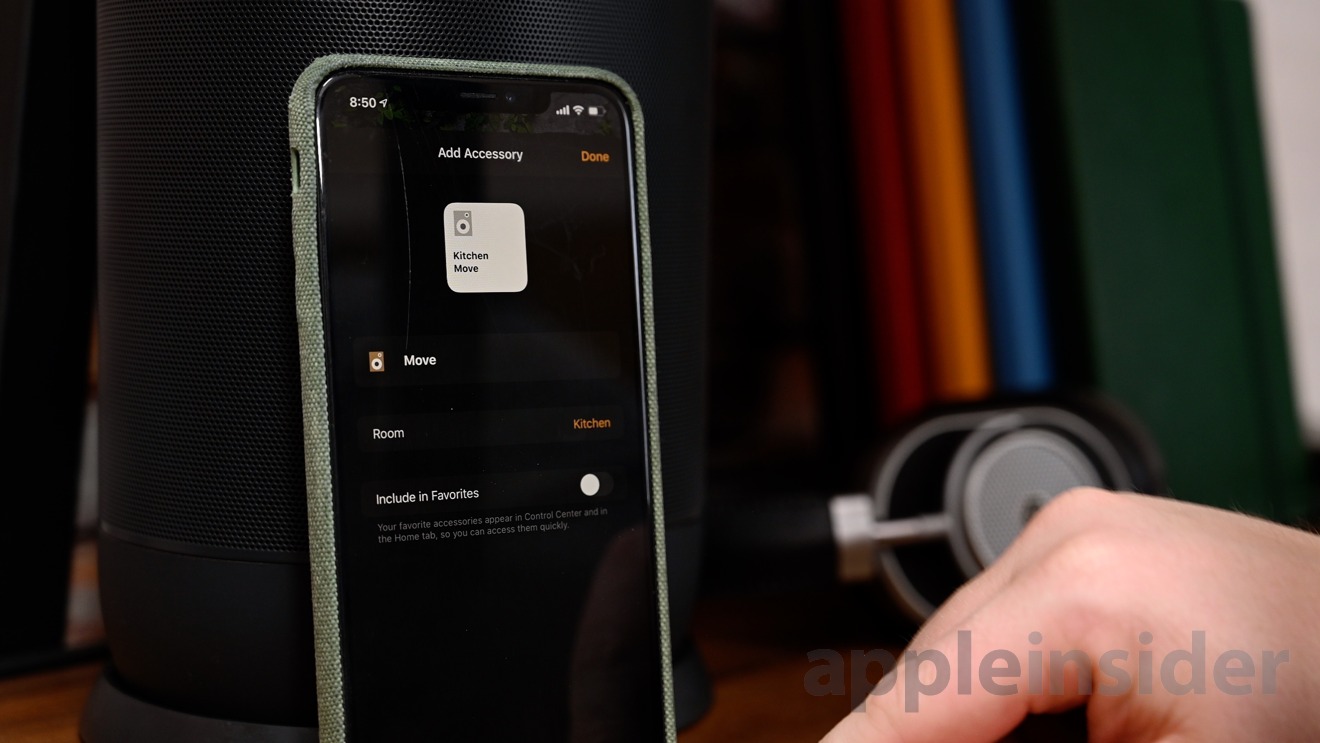
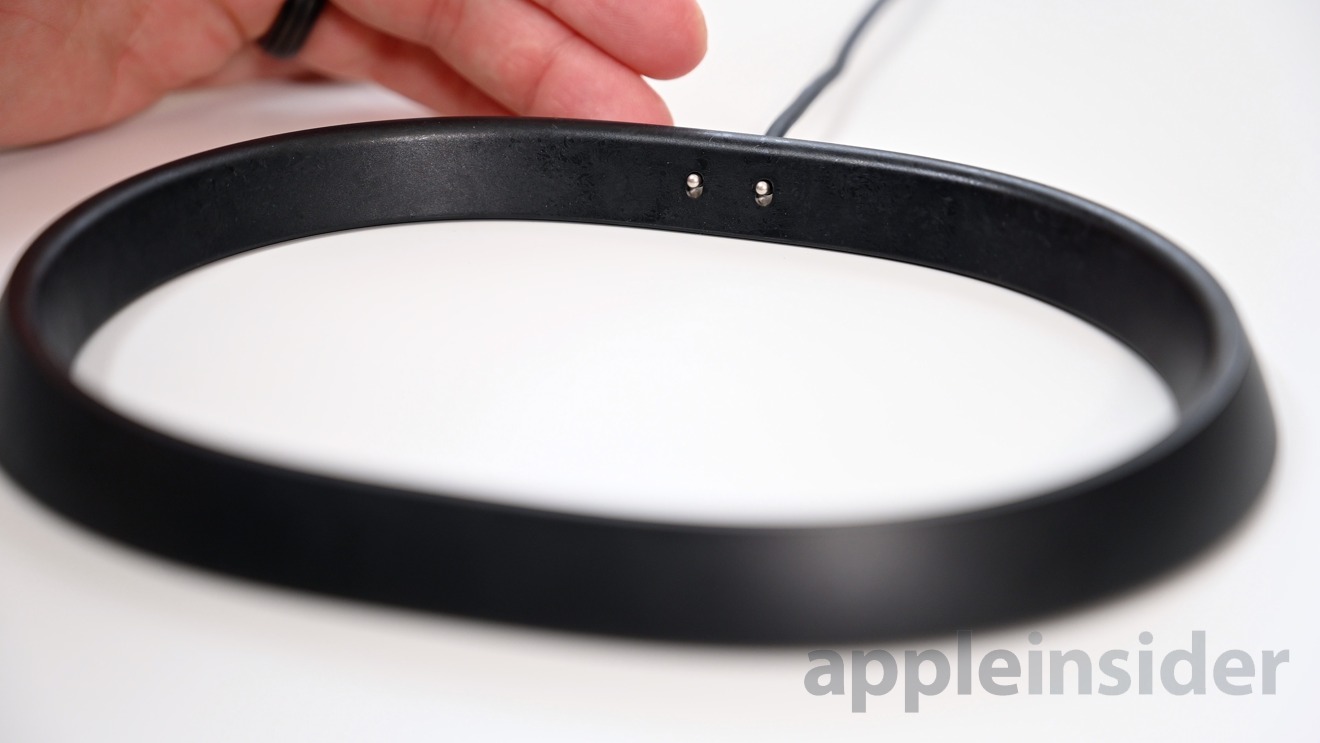
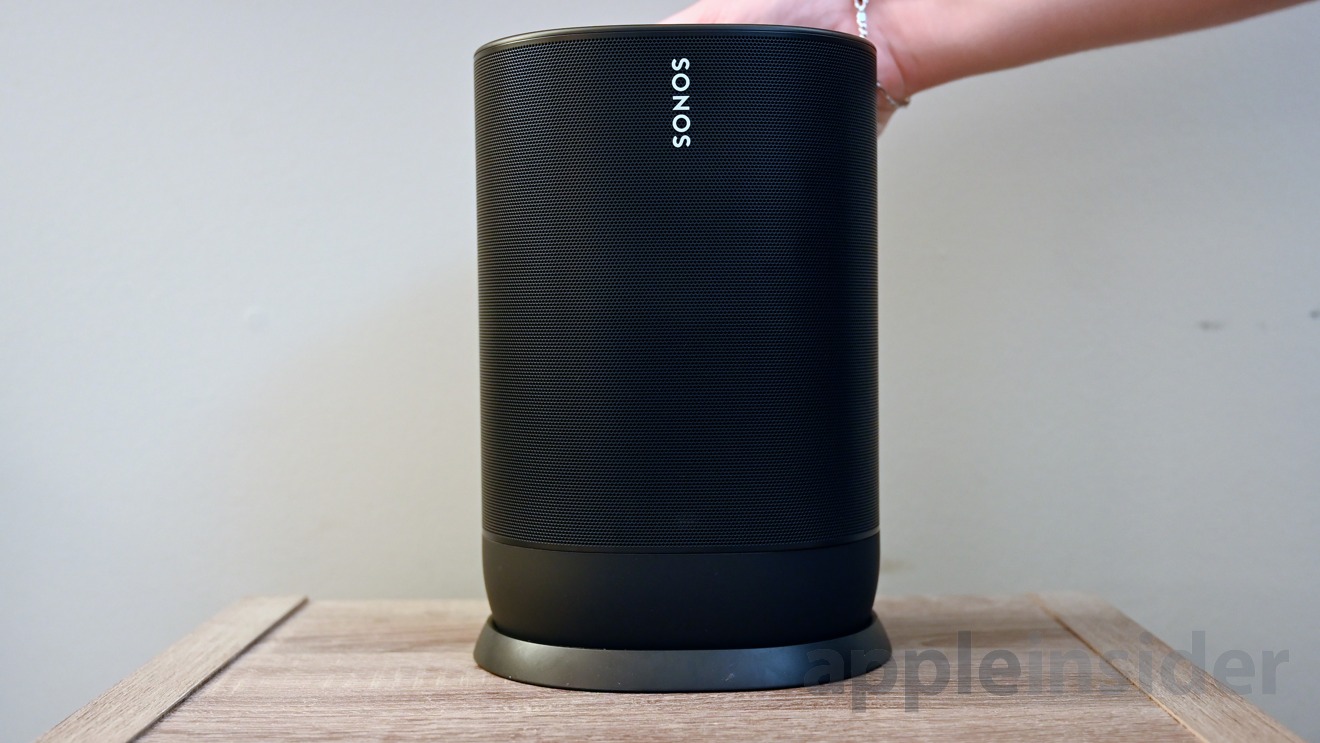
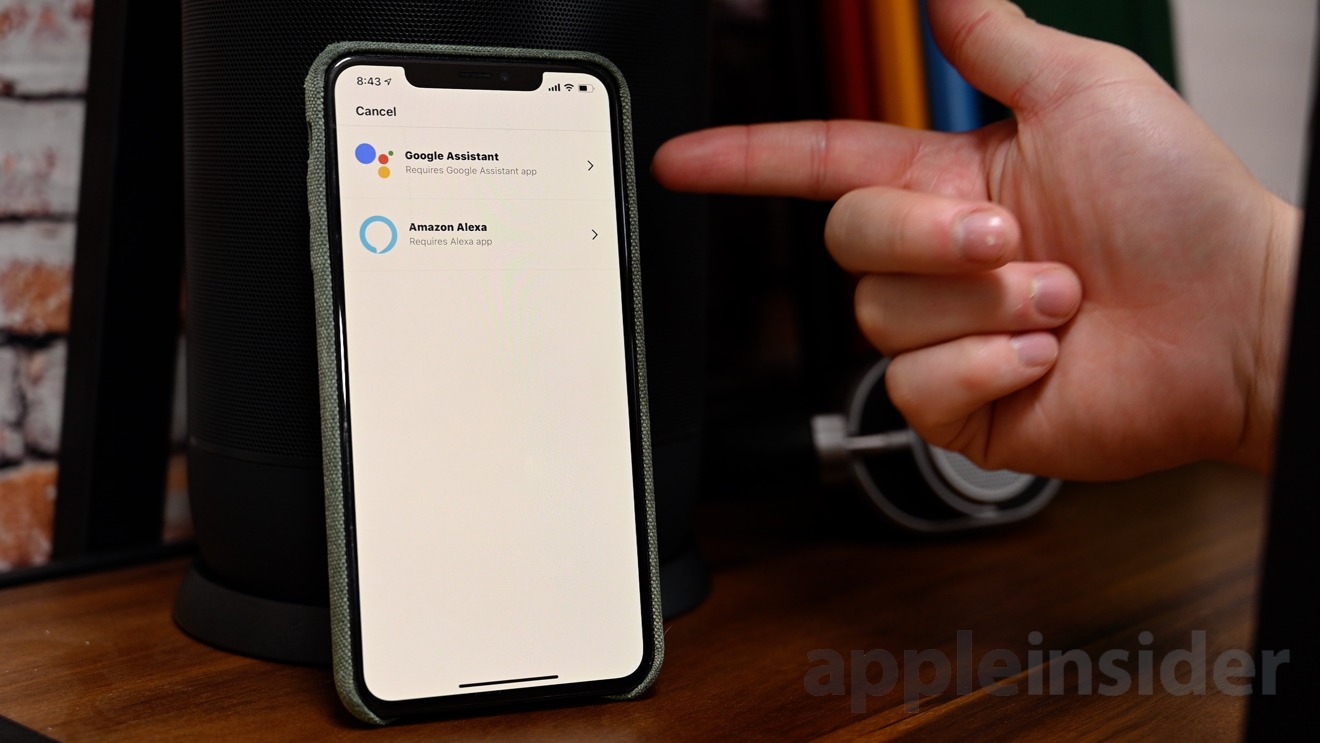
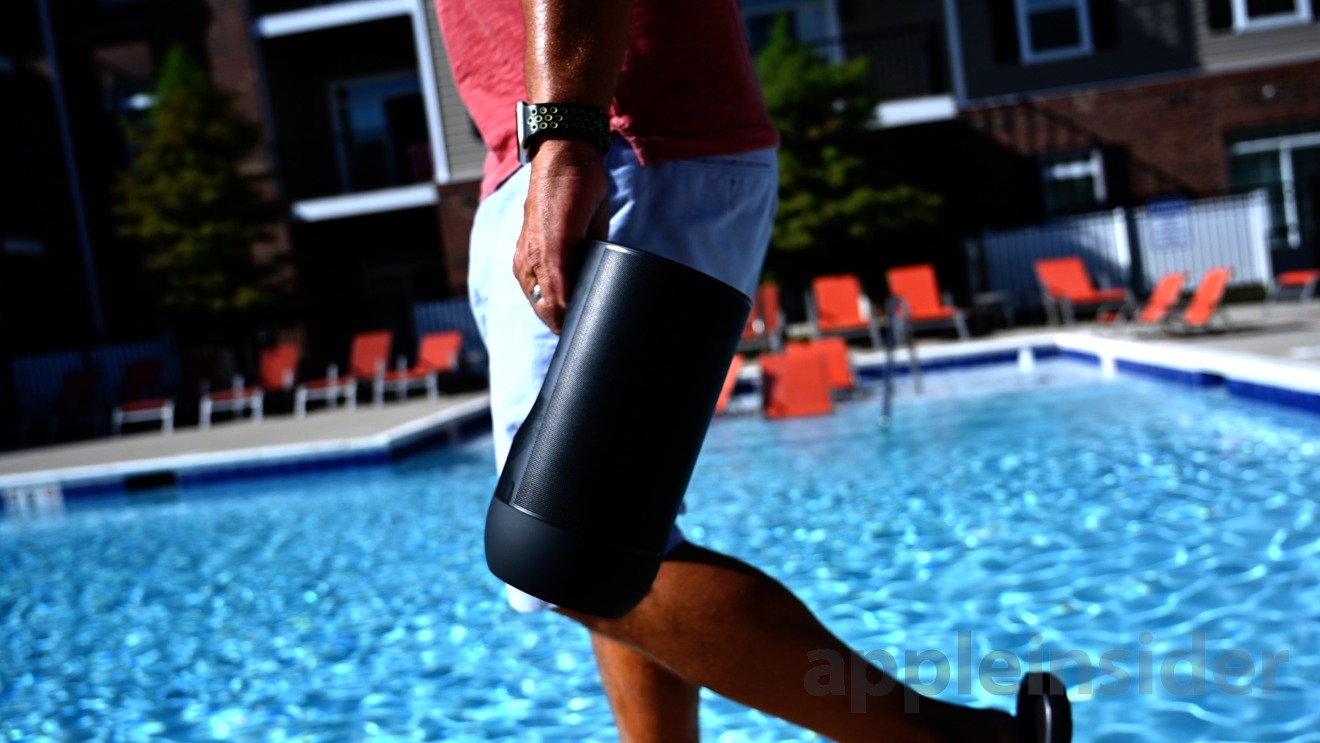

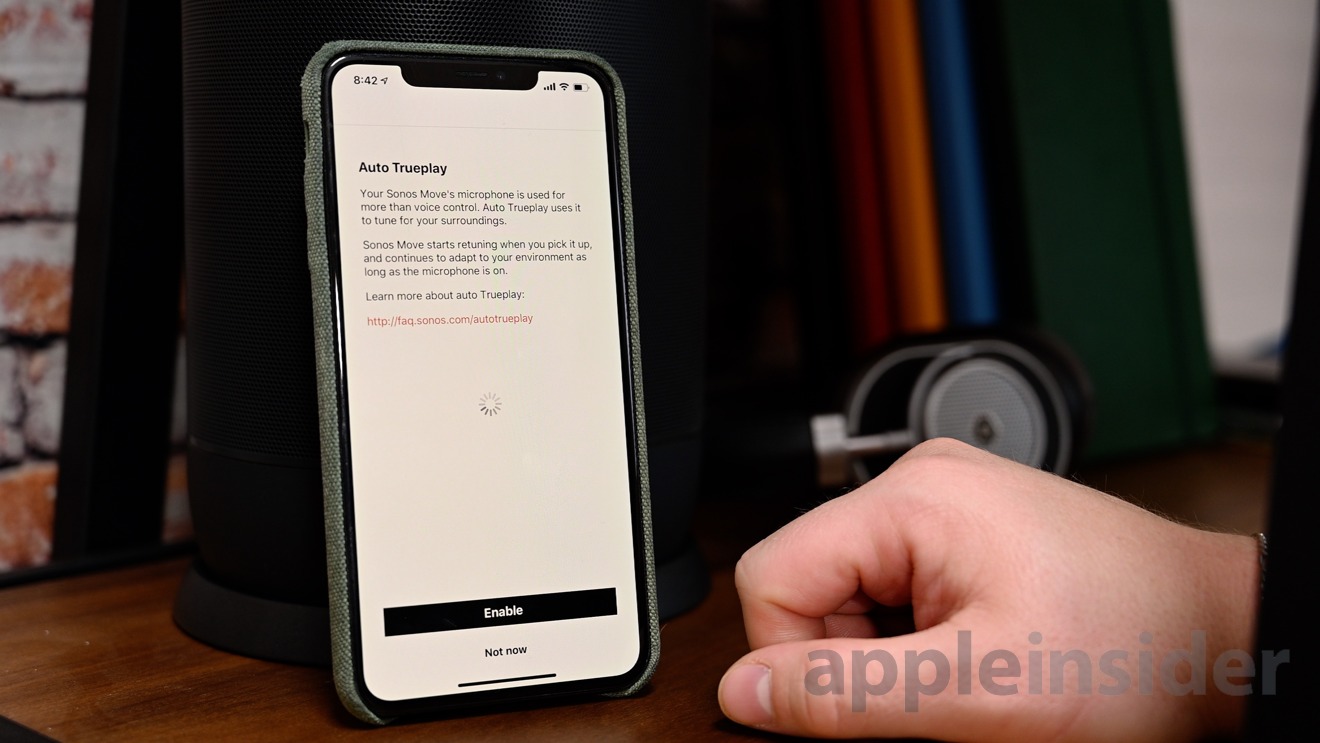
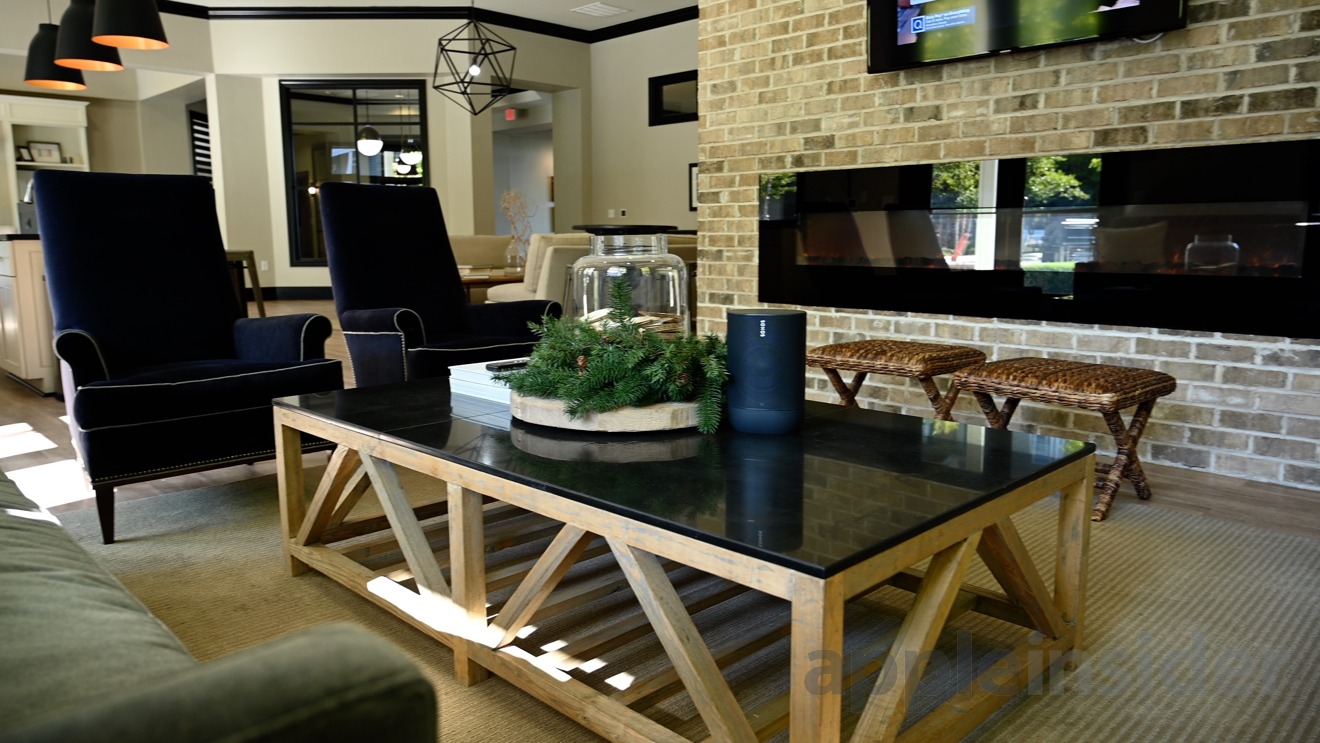

-m.jpg)







 Wesley Hilliard
Wesley Hilliard

 Malcolm Owen
Malcolm Owen
 Marko Zivkovic
Marko Zivkovic

 Chip Loder
Chip Loder
 Christine McKee
Christine McKee




-m.jpg)




20 Comments
It's amazing what removing the Apple logo will do for a speaker review. There's never "too much bass" and it's never too expensive.
"We don't have to jump into the Sonos app, we just use Siri on our phone to "play some happy music on the Sonos Move" and it happens. " I have not been able to use Siri to play anything to my Homekit registered Sonos One speakers. I must explicity open the audio source (Apple Music eg) on my iPhone, and select the Sonos One via Airplay2. The Sonos App is not Siri enabled. I would love to figure out how you managed to get Siri to work with Sonos. Any tips, advice would be appreciated! I have asked Sonos for help, and they indicate to use Alexa or Google for voice, as their app is not setup for Siri. (not even Siri Shortcuts)